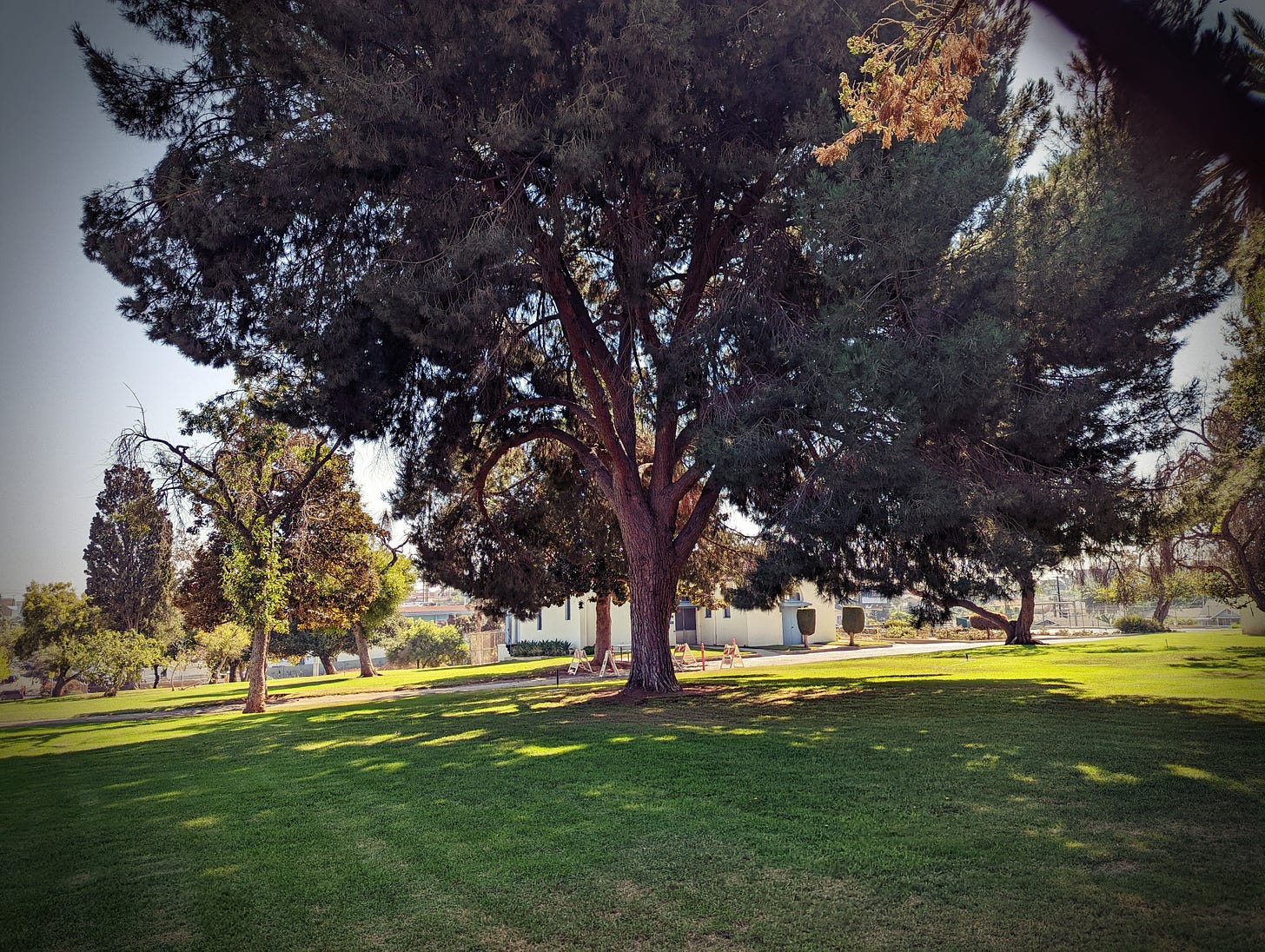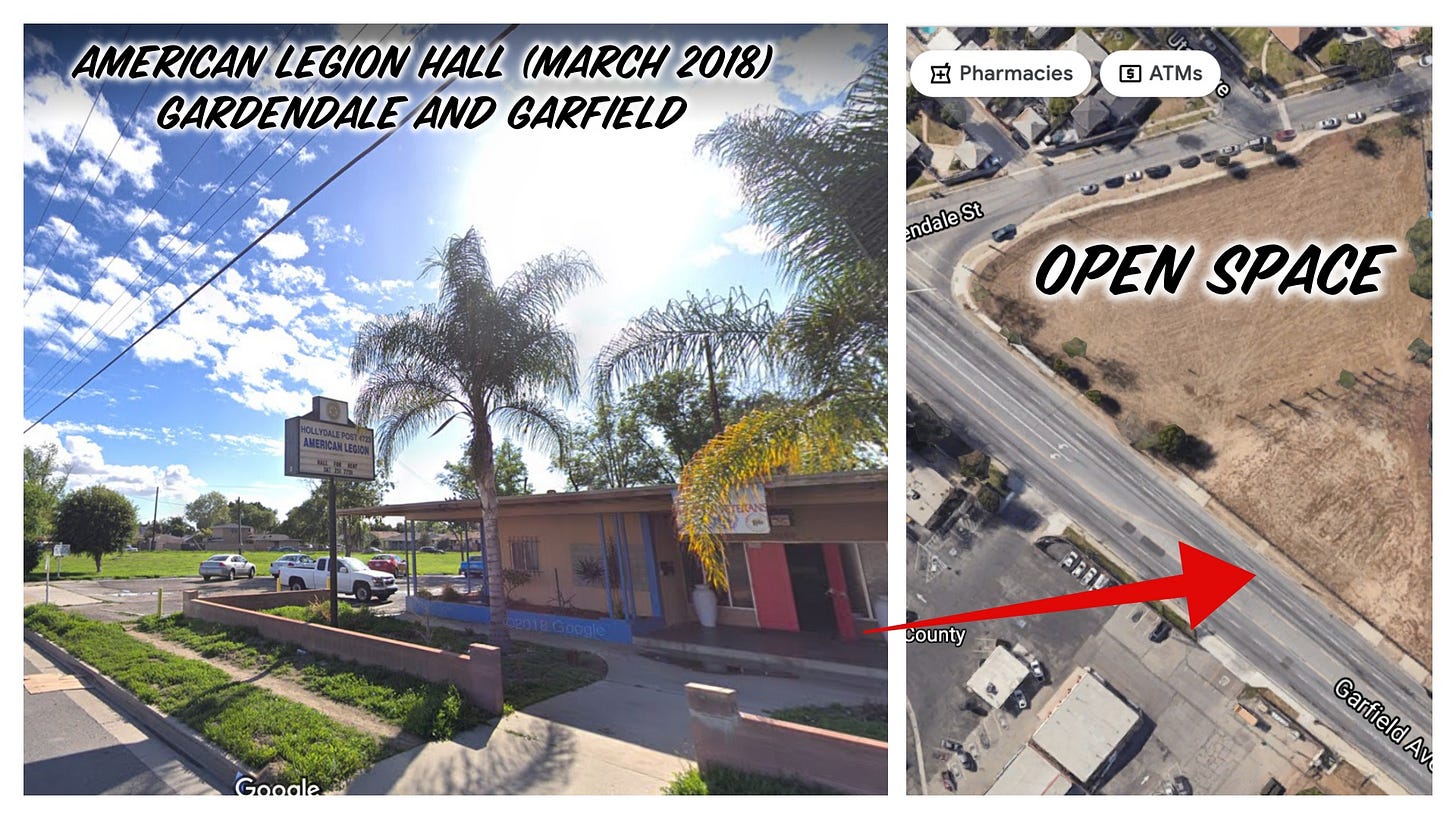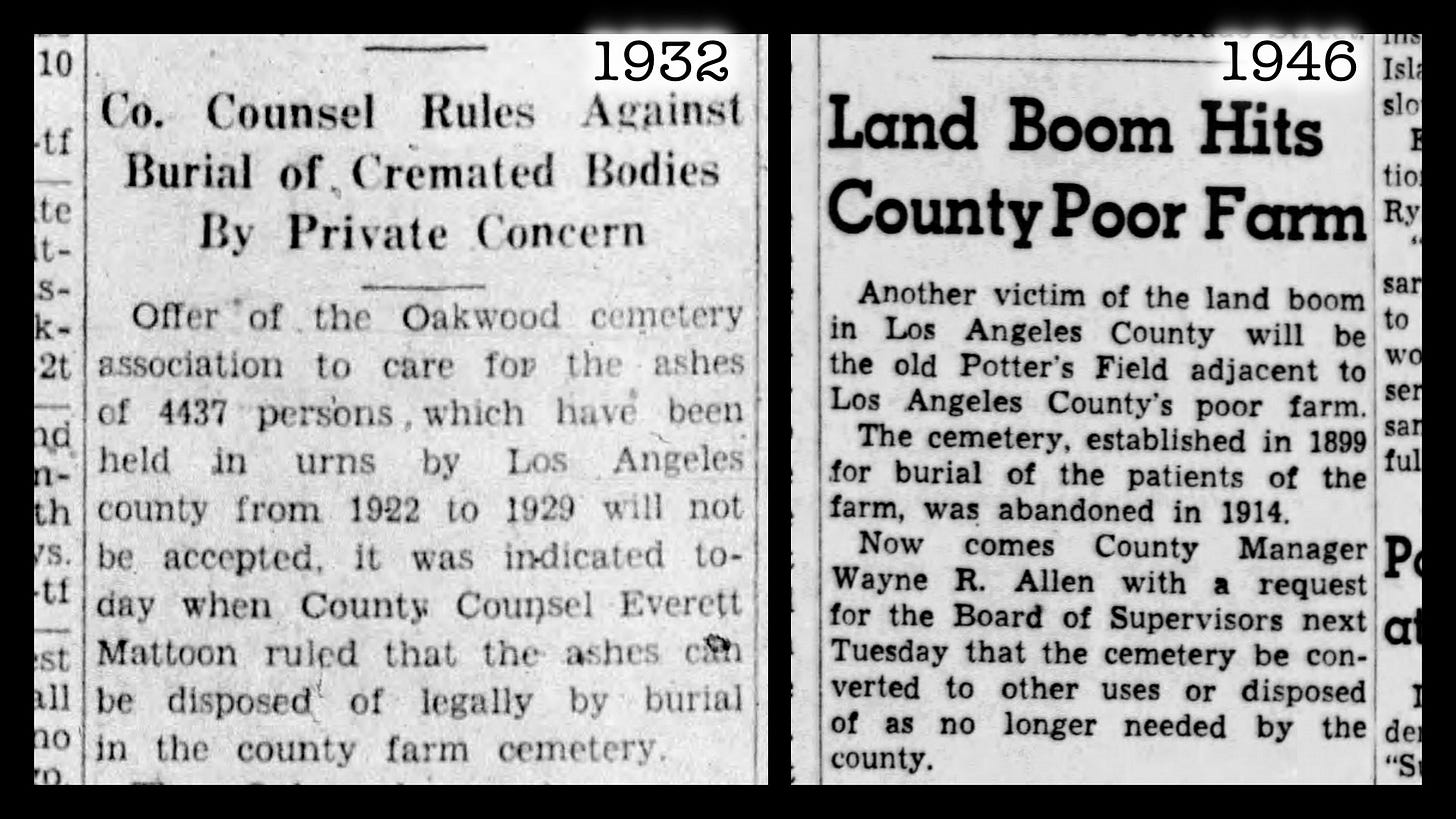Gentle reader,
You may have heard of Los Angeles County’s annual ceremony held at their small cemetery in Boyle Heights, The Burial of the Unclaimed Dead. The next one is scheduled for December 8 livestreaming on Facebook.
We wrote about Leo Vaisman, one of the remarkable Angelenos who rests there with thousands of strangers, and we conjured memories of his Third Street Promenade psychic cat performances on Saturday’s walking tour of Evergreen Cemetery, which is just next door.
The County has been conducting services for people who die without the means to pay for a private grave since Victoria was queen—but they didn’t always bury them in Boyle Heights.
The video in this newsletter was shot some weeks ago, outside the fence surrounding 11269 Garfield Avenue in Downey, a property which from 1946 to 2018 was home to the American Legion Hollydale Post.
But before then, it was the County cemetery attached to Rancho Los Amigos, the Poor Farm where the sick, elderly and indigent lived and died in care. While working with historian Colleen Adair Fliedner, author of the official centennial history, in advocating for preservation of historic landscape, trees, buildings and artifacts, we got interested in the unanswered question of what happened to the old cemetery, and the remains of those who were interred there.
This has become more than just an historical curiosity. On August 30, 2022, the Los Angeles County Supervisors voted to approve a lease agreement with nonprofit developers Abode Communities and PATH Ventures for 11269 Garfield Avenue, allowing the proposed Veterans Commons affordable housing project and workforce development hub, which some in the surrounding community have advocated against, to move forward.
Our research suggests that this seemingly vacant land may still contain a forgotten mass burial of the cremated remains of thousands of Rancho Los Amigos residents who were interred at the direction of County Counsel in 1932.
Here’s what we know: The triangular parcel was a cemetery until January 1914, when catastrophic flooding brought some caskets to the surface. After this, burials ceased.
But what did the County do with the remains of residents who died after January 1914? Unless claimed by family or friends for burial elsewhere, they were cremated and stored in urns at Rancho Los Amigos. Older graves that were not flooded remained in the ground, until the American Legion hall was constructed in 1946, when about 100 full body burials were reportedly exhumed and cremated.
By 1932, there were more than 5600 cremated remains stored at the Poor Farm. Administrators sought the permission of the County to have their urns buried at Oakwood Memorial Park in Chatsworth, at a cost of $1 each.
County Council Everett Mattoon did the math, and directed them to just go ahead and bury the urns “in the [existing] county farm cemetery”—so long as they kept a record of where each urn was buried. This was presumably in case a family member wished to visit, or move the remains later.
Which brings us to the unanswered question: could some of the 5600+ cremation urns ordered placed “in the [existing] county farm cemetery” in 1932 still be buried there? It’s possible. And now that the County has selected a team to develop the entire parcel, the status of the historic burials needs to be clarified once and for all.
We have been reaching out to various County and State agencies seeking information about the decommissioning of the old Potter’s Field and if the urns were moved or left in the ground. Our hope is that if people are still interred on the old cemetery property, their remains can be respectfully removed and reinterred in an appropriate place before construction begins.
To date, the County’s Department of Decedent Affairs has found no records. Perhaps the State’s Department of Consumer Affairs Cemetery and Funeral Bureau will know more.
Whether there are still human remains in Potter’s Field or not, we believe that there needs to be a memorial of some kind that acknowledges the historic use of this land as a cemetery, and the role that Rancho Los Amigos played as a progressive facility that was a model for the nation of how a wealthy community could establish policies to ensure that its most vulnerable citizens were treated with compassion, respect and honor, in death and in life.
We will continue to seek answers about what happened to the thousands of individuals whose remains were placed in Potter’s Field, and to advocate that the right thing is done so that they are respectfully remembered for generations to come.
yours for Los Angeles,
Kim & Richard
Esotouric
Psst… If you’d like to support our efforts to be the voice of places worth preserving, we have a tip jar and a subscriber edition of this newsletter, vintage Los Angeles webinars available on demand, in-person walking tours, gift certificates and a souvenir shop you can browse in. Or just share this link with other people who care.
Upcoming walking tours into the Secret Heart of Los Angeles:
• Saturday, November 12 - Angelino Heights and Carroll Avenue Time Travel Trip
• Saturday, November 19 - Highland Park Arroyo Time Travel Trip (Richard’s Birthday)
• Sunday, December 4 - La Brea Tar Pits Time Travel Trip
• Saturday, December 10 - All Around the Auto Club West Adams History Tour
• Saturday, December 17 - Bunker Noir! True Crime on Los Angeles’ Bunker Hill Tour











Share this post